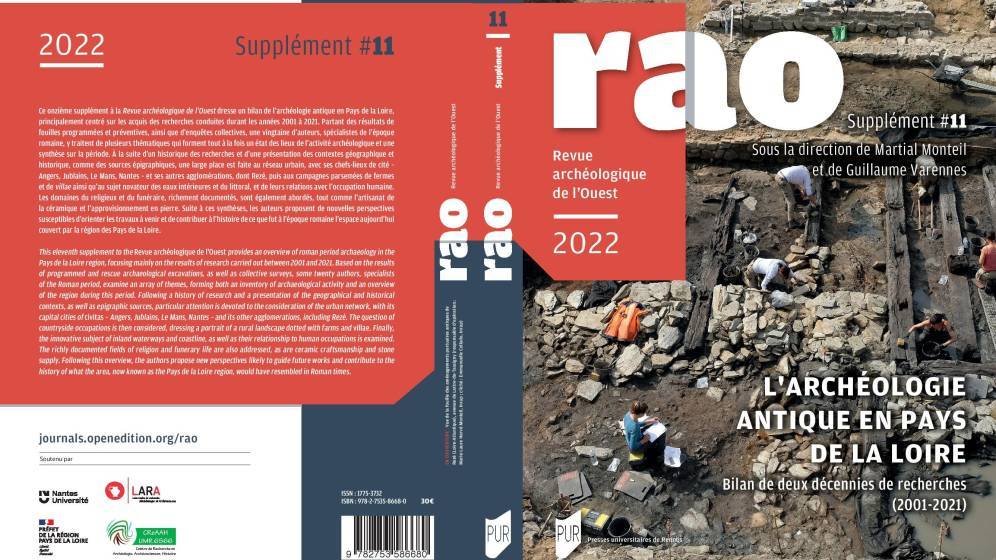The dissemination of knowledge is one of the priorities of the Ministry of Culture. The book on ancient archaeology in the Pays de la Loire between 2001 and 2021 is a synthesis of research results from field operations or research programs. It thus addresses all the issues to be explored or developed. Finally, it was conceived as a real scientific tool to guide and guide archaeological research on antiquity induced in particular by the dynamism of the territory.
A review of the achievements of the research conducted over the past 20 years.
This book presents a review of ancient archaeology in the Pays de la Loire, focusing mainly on the achievements of the research conducted during the years 2001 to 2021. It is the largely enriched publication of the contributions presented in Nantes as part of the Regional Archaeological Days organized on 26 and 27 March 2018, under the direction of the Regional Archaeology Service of the Regional Directorate of Cultural Affairs, in partnership with Nantes Métropole and the University of Nantes. Following these first days, a new meeting was held on 14 December of the same year, bringing together the actors of research on regional antiquity. Nearly forty archaeologists working on antiquity in the region exchanged on these reports and the orientations to be given to regional research on antiquity. Martial Monteil, professor at the University of Nantes and Guillaume Varennes, curator of heritage at the Pays de la Loire Regional Archaeological Service, are in charge of the publication.
An initiative to respond to the dynamics of preventive archaeology
This work is part of the national approach initiated several decades ago by the Ministry of Culture, and in the continuity of the national program of archaeological research, in order to equip itself, in the regions, with a tool for developing research policy. The initiative of the DRAC Pays de la Loire aims to respond to the new challenges of research imposed by the dynamism of preventive archaeology and the growth of data acquired over the last twenty years, and the pressure of spatial planning, and recent developments in urban policy. These challenges include land use planning, settlement in the centre of the town and the centre of the city, erosion of the coastline, consolidation of research grants but also studies of data already acquired, conservation of furniture and dissemination to various audiences. This assessment is therefore also intended as a tool for making choices and arbitrations within the framework of regional coordination of all archaeological research.
A collective work
This work is the result of a collective work whose plan remains traditional in order to facilitate its use and to compare it with the axes of the national programming of the National Council for Archaeological Research. After a first introductory chapter on the one hand on the history of archaeology, methods and techniques, but also on the new research tools, as well as the historical and geographical context and on the other hand on the contributions of the epigraphic documentation, the body of the book deals successively with the great fields of research on the Gallo-Roman world. The chapter on the urban fact is devoted to the chief cities (Angers, Jublains, Le Mans, Nantes) and to the secondary towns (with a specific focus on Rezé). A chapter looks at the regional space from the perspective of rural settlements and water-related structures, infrastructures and activities. The next chapter deals with religion and the funeral field, by synthesizing the data available at the regional level. The last chapter deals with materials and places of production, with the specific lighting of pottery productions and the supply of stone. Finally, the authors propose elements of scientific guidance. These guidelines and the provision of a rich thematic bibliography will make this work indispensable for researchers.
The chosen publication medium makes this assessment in the regional history of research, the Western Archaeological Review having agreed to publish it in the collection of its supplements. The future launch of its content will allow for the widest possible dissemination.
The publication of this book was funded by DRAC, Nantes University and LARA-UMR 6566 CReAAH.
Partager la page
